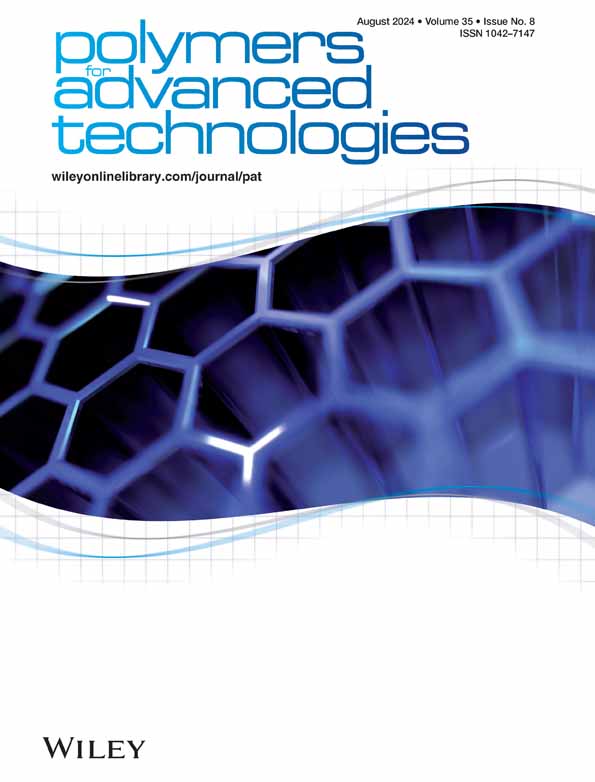SegNet‐VOLO model for classifying microplastic contaminants in water bodies
IF 3.4
4区 工程技术
Q2 POLYMER SCIENCE
引用次数: 0
Abstract
In recent times, microplastics (MPs) have emerged as notable contaminants within several environments, especially in water bodies. The characterization and description of MPs necessitate extensive and laborious analytical methods, making this part of MPs research an essential issue. In this research, SegNet‐Vision Outlooker (VOLO), a computer vision and deep learning (DL)‐based model, is proposed for detecting and classifying MPs present in a water environment. This research model includes step‐by‐step processes such as data collection, preprocessing, filtering and enhancement, augmentation, segmentation, feature extraction, and classification for detecting MPs. The key objective of this research model is to improve the classification accuracy in detecting MPs and to validate the model's effectiveness in handling holographic images. The Holographic Image MPs dataset is collected and used to evaluate the model. In preprocessing, image rescaling is performed to match the proposed model's input resolution as 224 × 224. After rescaling, the images are applied to remove noise using a bilateral filtering technique. The contrast‐limited adaptive histogram equalization (CLAHE) method is applied to enhance the image with better contrast and brightness, which helps the model to segment and classify the images accurately. The enhanced images are applied to the SegNet model for segmentation, which segmented the images according to the MP classes. Based on the segmented images, the VOLO‐D1 model extracted the features and classified the images to detect the MPs present in the images. The SegNet‐VOLO model attained 97.70% detection rate, 98.26% accuracy, 98.13% F1‐score, and 98.62% precision. These performances are compared with the various existing models discussed in the review, where the research model outperformed all the models with better performances.用于水体中微塑料污染物分类的 SegNet-VOLO 模型
近来,微塑料(MPs)已成为一些环境中的显著污染物,尤其是在水体中。对微塑料进行表征和描述需要大量费力的分析方法,因此这部分研究成为微塑料研究的重要课题。本研究提出了基于计算机视觉和深度学习(DL)的 SegNet-Vision Outlooker (VOLO)模型,用于检测水环境中存在的 MPs 并对其进行分类。该研究模型包括数据收集、预处理、过滤和增强、增强、分割、特征提取和分类等步骤,用于检测 MPs。该研究模型的主要目标是提高检测 MP 的分类准确性,并验证该模型在处理全息图像方面的有效性。全息图像 MPs 数据集被收集并用于评估该模型。在预处理过程中,对图像进行了重新缩放,以匹配建议模型的 224 × 224 输入分辨率。重新缩放后,使用双边滤波技术去除图像中的噪声。对比度限制自适应直方图均衡化(CLAHE)方法用于增强图像的对比度和亮度,从而帮助模型对图像进行准确分割和分类。增强后的图像应用 SegNet 模型进行分割,该模型根据 MP 类别分割图像。根据分割后的图像,VOLO-D1 模型提取特征并对图像进行分类,以检测图像中存在的 MP。SegNet-VOLO 模型达到了 97.70% 的检测率、98.26% 的准确率、98.13% 的 F1 分数和 98.62% 的精确率。将这些性能与综述中讨论的各种现有模型进行比较后发现,该研究模型的性能优于所有模型。
本文章由计算机程序翻译,如有差异,请以英文原文为准。
求助全文
约1分钟内获得全文
求助全文
来源期刊

Polymers for Advanced Technologies
工程技术-高分子科学
CiteScore
6.20
自引率
5.90%
发文量
337
审稿时长
2.1 months
期刊介绍:
Polymers for Advanced Technologies is published in response to recent significant changes in the patterns of materials research and development. Worldwide attention has been focused on the critical importance of materials in the creation of new devices and systems. It is now recognized that materials are often the limiting factor in bringing a new technical concept to fruition and that polymers are often the materials of choice in these demanding applications. A significant portion of the polymer research ongoing in the world is directly or indirectly related to the solution of complex, interdisciplinary problems whose successful resolution is necessary for achievement of broad system objectives.
Polymers for Advanced Technologies is focused to the interest of scientists and engineers from academia and industry who are participating in these new areas of polymer research and development. It is the intent of this journal to impact the polymer related advanced technologies to meet the challenge of the twenty-first century.
Polymers for Advanced Technologies aims at encouraging innovation, invention, imagination and creativity by providing a broad interdisciplinary platform for the presentation of new research and development concepts, theories and results which reflect the changing image and pace of modern polymer science and technology.
Polymers for Advanced Technologies aims at becoming the central organ of the new multi-disciplinary polymer oriented materials science of the highest scientific standards. It will publish original research papers on finished studies; communications limited to five typewritten pages plus three illustrations, containing experimental details; review articles of up to 40 pages; letters to the editor and book reviews. Review articles will normally be published by invitation. The Editor-in-Chief welcomes suggestions for reviews.
 求助内容:
求助内容: 应助结果提醒方式:
应助结果提醒方式:


